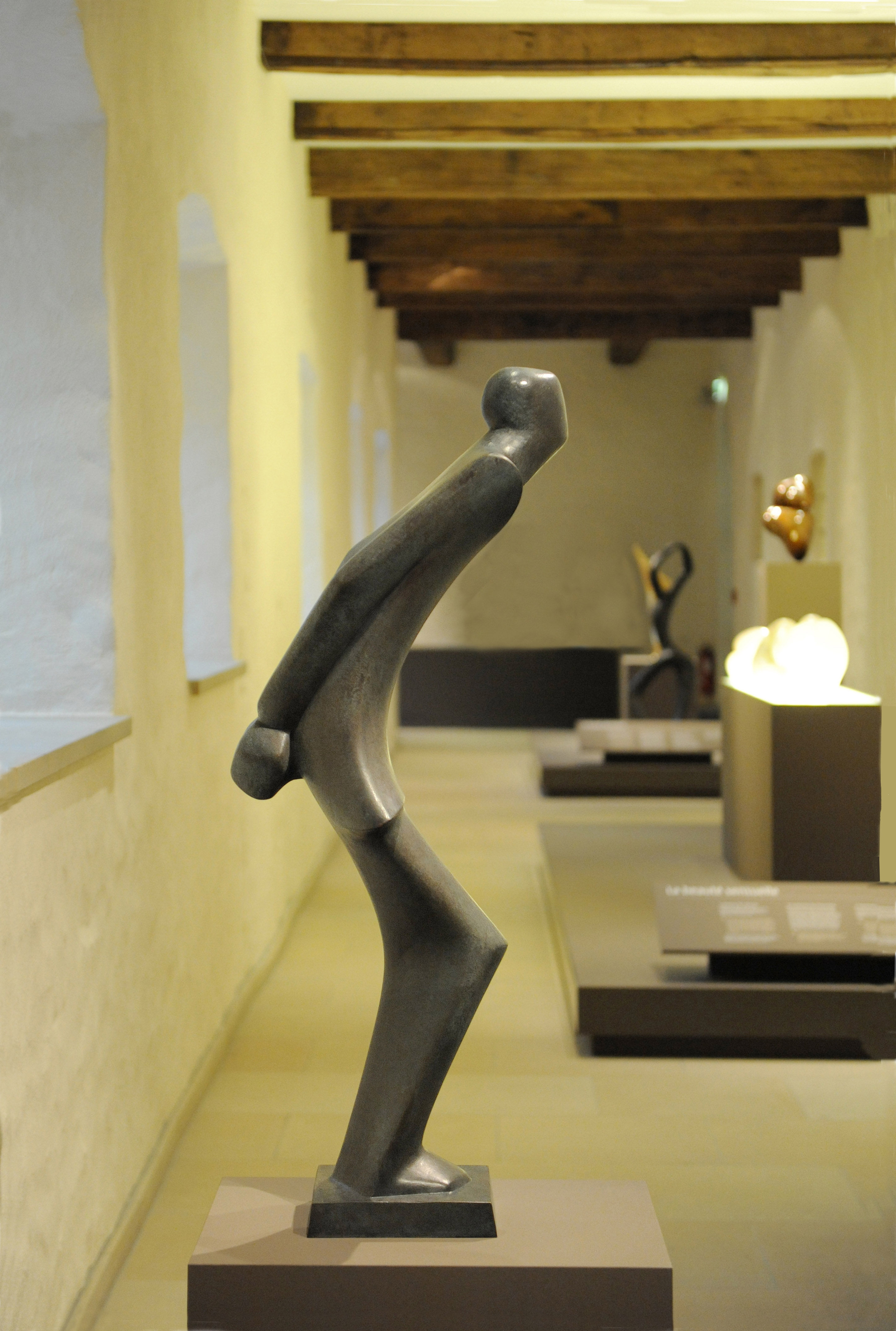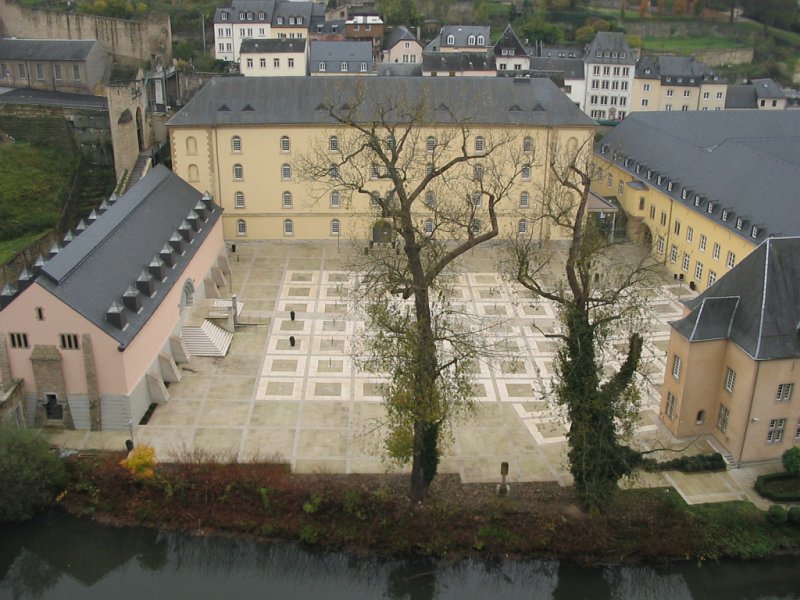|
Le Prisonnier Politique
''Le prisonnier politique'' (French; ''The Political Prisoner'') is a bronze sculpture created in 1949 by Luxembourgish sculptor Lucien Wercollier. It exists in three different versions. History During the Second World War, from September 1942 to November 1943, Lucien Wercollier was a prisoner in the Nazi Hinzert concentration camp, where he witnessed other prisoners being tortured. SS officers took two of them, roped their hands together and then tied their backs together. After this, they had to stay outside for days, in winter. It was in the Hinzert concentration camp that Wercollier met Jean Daligault, a French Resistance fighter, priest and artist, who was kidnapped and brought to Hinzert after the ''Nacht und Nebel'' directive. In December 1942, Wercollier shared food out of his Christmas package with Daligault, who was not allowed to receive anything from his family. As a thank-you gift, Daligault gave Wercollier a small sculpture that he had made out of old pieces of w ... [...More Info...] [...Related Items...] OR: [Wikipedia] [Google] [Baidu] |
Schutzstaffel
The ''Schutzstaffel'' (SS; also stylized as ''ᛋᛋ'' with Armanen runes; ; "Protection Squadron") was a major paramilitary organization under Adolf Hitler and the Nazi Party in Nazi Germany, and later throughout German-occupied Europe during World War II. It began with a small guard unit known as the ''Saal-Schutz'' ("Hall Security") made up of party volunteers to provide security for party meetings in Munich. In 1925, Heinrich Himmler joined the unit, which had by then been reformed and given its final name. Under his direction (1929–1945) it grew from a small paramilitary formation during the Weimar Republic to one of the most powerful organizations in Nazi Germany. From the time of the Nazi Party's rise to power until the regime's collapse in 1945, the SS was the foremost agency of security, surveillance, and terror within Germany and German-occupied Europe. The two main constituent groups were the '' Allgemeine SS'' (General SS) and ''Waffen-SS'' (Armed SS). The ' ... [...More Info...] [...Related Items...] OR: [Wikipedia] [Google] [Baidu] |
Holocaust Commemoration
The Holocaust, also known as the Shoah, was the genocide of European Jews during World War II. Between 1941 and 1945, Nazi Germany and its collaborators systematically murdered some six million Jews across German-occupied Europe; around two-thirds of Europe's Jewish population. The murders were carried out in pogroms and mass shootings; by a policy of extermination through labor in concentration camps; and in gas chambers and gas vans in German extermination camps, chiefly Auschwitz-Birkenau, Bełżec, Chełmno, Majdanek, Sobibór, and Treblinka in occupied Poland. Germany implemented the persecution in stages. Following Adolf Hitler's appointment as chancellor on 30 January 1933, the regime built a network of concentration camps in Germany for political opponents and those deemed "undesirable", starting with Dachau on 22 March 1933. After the passing of the Enabling Act on 24 March, which gave Hitler dictatorial plenary powers, the government began isolating ... [...More Info...] [...Related Items...] OR: [Wikipedia] [Google] [Baidu] |
Outdoor Sculptures
Sculpture is the branch of the visual arts that operates in three dimensions. Sculpture is the three-dimensional art work which is physically presented in the dimensions of height, width and depth. It is one of the plastic arts. Durable sculptural processes originally used carving (the removal of material) and modelling (the addition of material, as clay), in stone, metal, ceramics, wood and other materials but, since Modernism, there has been an almost complete freedom of materials and process. A wide variety of materials may be worked by removal such as carving, assembled by welding or modelling, or moulded or cast. Sculpture in stone survives far better than works of art in perishable materials, and often represents the majority of the surviving works (other than pottery) from ancient cultures, though conversely traditions of sculpture in wood may have vanished almost entirely. However, most ancient sculpture was brightly painted, and this has been lost. [...More Info...] [...Related Items...] OR: [Wikipedia] [Google] [Baidu] |
European Sculpture
European, or Europeans, or Europeneans, may refer to: In general * ''European'', an adjective referring to something of, from, or related to Europe ** Ethnic groups in Europe ** Demographics of Europe ** European cuisine, the cuisines of Europe and other Western countries * ''European'', an adjective referring to something of, from, or related to the European Union ** Citizenship of the European Union ** Demographics of the European Union In publishing * ''The European'' (1953 magazine), a far-right cultural and political magazine published 1953–1959 * ''The European'' (newspaper), a British weekly newspaper published 1990–1998 * ''The European'' (2009 magazine), a German magazine first published in September 2009 *''The European Magazine'', a magazine published in London 1782–1826 *''The New European'', a British weekly pop-up newspaper first published in July 2016 Other uses * * Europeans (band), a British post-punk group, from Bristol See also * * * Europe (disambi ... [...More Info...] [...Related Items...] OR: [Wikipedia] [Google] [Baidu] |
1949 Sculptures
Events January * January 1 – A United Nations-sponsored ceasefire brings an end to the Indo-Pakistani War of 1947. The war results in a stalemate and the division of Kashmir, which still continues as of 2022. * January 2 – Luis Muñoz Marín becomes the first democratically elected Governor of Puerto Rico. * January 11 – The first "networked" television broadcasts take place, as KDKA-TV in Pittsburgh, Pennsylvania goes on the air, connecting east coast and mid-west programming in the United States. * January 16 – Şemsettin Günaltay forms the new government of Turkey. It is the 18th government, last single party government of the Republican People's Party. * January 17 – The first VW Type 1 to arrive in the United States, a 1948 model, is brought to New York by Dutch businessman Ben Pon. Unable to interest dealers or importers in the Volkswagen, Pon sells the sample car to pay his travel expenses. Only two 1949 models are sold in America that ... [...More Info...] [...Related Items...] OR: [Wikipedia] [Google] [Baidu] |
Neumünster Abbey
Neumünster Abbey (Luxembourgish: ''Abtei Neimënster'', french: Abbaye de Neumünster) is a public meeting place, cultural centre, and former Benedictine abbey located in the Grund district of Luxembourg City in southern Luxembourg. History After the original Benedictine abbey on the Altmünster Plateau was destroyed in 1542, the monks began building a new abbey or "Neumünster" in 1606 in the Grund. In 1618, a marble tomb was constructed to house the bones of John the Blind. The Abbey was destroyed in 1684 during the Siege of Luxembourg. The Abbey began to rebuild on the same site in 1688 and extended in 1720. In 1796, the French Directory enacted legislation that secularized Luxembourg's abbeys. In 1798, the Abbey was used as a prison and barracks. In 1805, the municipality's welfare office used the Abbey for an orphanage. The orphanage operated until 1807 when a gunpowder explosion destroyed the building. After 1815, the Abbey served as a military hospital for Germa ... [...More Info...] [...Related Items...] OR: [Wikipedia] [Google] [Baidu] |
Gypsum
Gypsum is a soft sulfate mineral composed of calcium sulfate dihydrate, with the chemical formula . It is widely mined and is used as a fertilizer and as the main constituent in many forms of plaster, blackboard or sidewalk chalk, and drywall. Alabaster, a fine-grained white or lightly tinted variety of gypsum, has been used for sculpture by many cultures including Ancient Egypt, Mesopotamia, Ancient Rome, the Byzantine Empire, and the Nottingham alabasters of Medieval England. Gypsum also crystallizes as translucent crystals of selenite. It forms as an evaporite mineral and as a hydration product of anhydrite. The Mohs scale of mineral hardness defines gypsum as hardness value 2 based on scratch hardness comparison. Etymology and history The word ''gypsum'' is derived from the Greek word (), "plaster". Because the quarries of the Montmartre district of Paris have long furnished burnt gypsum (calcined gypsum) used for various purposes, this dehydrated gypsum became known ... [...More Info...] [...Related Items...] OR: [Wikipedia] [Google] [Baidu] |
National Resistance Museum, Luxembourg
The National Museum of Resistance and Human Rights (French: ''Musée National de la Résistance et des Droits Humains'') is located in the centre of Esch-sur-Alzette in the south-east of Luxembourg. The specially designed building (1956) traces the history of Luxembourg from 1940 to 1945 under the Nazi oppression, through the reactions of the people (passive resistance, resistance movements, forced enrolment, strike, refractory, Luxembourger in the maquis and in the Allied forces), until liberation, by photos, objects and works of art. There is also an exhibition of the Nazi concentration camps and the treatment of Luxembourg's Jews. History From the late 1940s, those involved in the resistance and political deportees began to plan a national resistance museum in order to preserve the memory of Luxembourg's victims of the Nazi occupation. A committee made up of the City of Esch-sur-Alzette, unions and representatives of resistance movements under the presidency of Ed Barbel, u ... [...More Info...] [...Related Items...] OR: [Wikipedia] [Google] [Baidu] |
Nacht Und Nebel
''Nacht und Nebel'' (German: ), meaning Night and Fog, was a directive issued by Adolf Hitler on 7 December 1941 targeting political activists and resistance "helpers" in the territories occupied by Nazi Germany during World War II, who were to be imprisoned, murdered, or made to disappear, while the family and the population remained uncertain as to the fate or whereabouts of the alleged offender against the Nazi occupation power. Victims who disappeared in these clandestine actions were never heard from again. Name The alliterative hendiadys ''Nacht und Nebel'' (German for "Night and Fog") is documented in German since the beginning of the 17th century. It was used by Wagner in ''Das Rheingold'' (1869) and has since been adopted into everyday German (e.g. it appears in Thomas Mann's '' Der Zauberberg,'' or "The Magic Mountain"). It is not clear whether the term ''Nacht-und-Nebel-Erlass'' ("Night and Fog directive") had been in wide circulation or used publicly before 1945. Th ... [...More Info...] [...Related Items...] OR: [Wikipedia] [Google] [Baidu] |
French Resistance
The French Resistance (french: La Résistance) was a collection of organisations that fought the German occupation of France during World War II, Nazi occupation of France and the Collaborationism, collaborationist Vichy France, Vichy régime during the World War II, Second World War. Resistance Clandestine cell system, cells were small groups of armed men and women (called the Maquis (World War II), Maquis in rural areas) who, in addition to their guerrilla warfare activities, were also publishers of underground newspapers, providers of first-hand intelligence information, and maintainers of escape networks that helped Allies of World War II, Allied soldiers and airmen trapped behind enemy lines. The Resistance's men and women came from all economic levels and political leanings of French society, including émigrés, academics, students, Aristocratic family, aristocrats, conservative Catholic Church, Roman Catholics (including priests and Yvonne Beauvais, nuns), Protestantis ... [...More Info...] [...Related Items...] OR: [Wikipedia] [Google] [Baidu] |
Hinzert Concentration Camp
Hinzert was a concentration camp in Nazi Germany, in what is now Rhineland-Palatinate, from the border with Luxembourg. Between 1939 and 1945, 13,600 political prisoners between the ages of 13 and 80 were imprisoned at Hinzert. Many were in transit towards larger concentration camps where most would be killed. However, many prisoners were executed at Hinzert. The camp was administered, run, and guarded mainly by the SS, who, according to Hinzert survivors, were notorious for their brutality and viciousness. Location and layout Located on the ''Hochwald'' plateau, and overlooking the Hunsrück mountain range, the Hinzert concentration camp was named after the nearest village, now called Hinzert-Pölert. At an altitude of 550m, the plateau is exposed to much humidity, wind, strong precipitation, fog and glacial temperatures in winter. The camp was surrounded by a coniferous forest that provided lumber for the camp's construction and maintenance. An access road that first ... [...More Info...] [...Related Items...] OR: [Wikipedia] [Google] [Baidu] |







